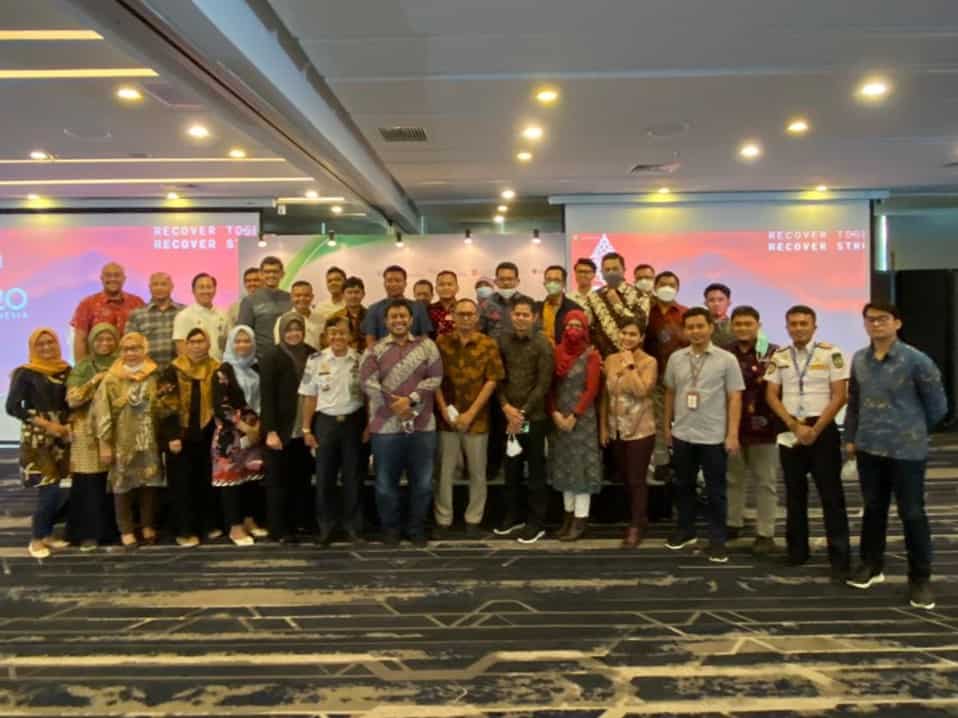Improving skills and knowledge for public transport key stakeholder through capacity development program

The success of a bus rapid transit (BRT) system cannot be solely attributed to dedicated bus lanes. It also requires skilled personnel to operate the system. A NAMA Support Project (NSP) funded by the NAMA Facility, “Indonesia—Sustainable Urban Transport Program (SUTRI NAMA)” jointly with its technical component, INDOBUS, conducted a comprehensive capacity development programme. The programme started with a capacity need assessment (CNA) study conducted in 2021. The study found that capacity development helps stakeholders involved in the BRT system to deepen their understanding of sustainable urban transport and transport demand management. This includes planning, procurement, operations and maintenance, transport demand management, human resources management and integration with existing systems. Based on the CNA study, the capacity development programme consists of seven training modules:
- Module 1: Urban Transport Planning with Emphasis on Integrated BRT System
- Module 2: Development Project and Implementation of Non-Motorised Transport (NMT) and Parking Projects
- Module 3: Transport Demand Modelling and Simulation of Urban Infrastructure Impact
- Module 4: Feasibility Study and Infrastructure Financing Alternatives
- Module 5: Tender Processes for Sustainable Urban Transport Projects
- Module 6: BRT Operation and Management
- Module 7: Measurement, Reporting and Verification (MRV) of Greenhouse Gas (GHG) Emissions
The capacity development programme combined in-class structured discussions with workshops and site visits. The capacity development programme was a series of events that started with the Training of Trainers for Transportation Apparatuses (PPSDMAP) in March 2022, Capacity Development Batch 1 in July-August 2022, and Capacity Development Batch 2 in September-October 2022. A total of 316 participants trained through the program, with an average of 20-25 participants for each module. The participants consist of government officials both from the national government (Directorate of Land Transport in the Ministry of Transportation) and local government of NSP’s five pilot cities i.e. Bandung, Makassar, Semarang, Pekanbaru, and Batam, as well as from the existing bus service operator such as Trans Metro Pekanbaru and Trans Batam.
To the capacity development programme, Mr. Tony Agus Setiono, Head of Sub-Directorate Urban Transport, the Directorate of Land Transportation, Ministry of Transportation, offered his remarks. He hoped this activity could answer the needs of relevant stakeholders, especially the local government and local transportation agency, to successfully assist the transformation towards sustainable urban transport in their area.



The training started with in a class-structured discussion and workshop for the first four modules. Participants discussed urban transport planning emphasising integrated BRT systems, NMT, Parking, and learning the transport demand modelling simulation and feasibility study about infrastructure financing alternatives. After the end of the classroom session for Module 5, the participants visited the National Public Procurement Agency (LKPP) to learn about an e-catalogue system. This electronic information system contains lists, types, technical specifications, country of origin, prices, and other information from various providers of goods/services. They also joined a knowledge-sharing session with the Jakarta Goods and Services Procurement Agency (BPPBJ). BPPBJ discussed their experience with using e-catalogue in a local procurement mechanism.



The second site visit, conducted after Module 6, provided participants with real-life experience using various transport modes in Jakarta. The participants first visited DKI Jakarta Transportation Agency to gain insight into DKI Jakarta’s experience in public transport integration. After that, they also visited the Mayasari Bakti office, one of bus operators for TransJakarta, to learn about BRT operation including electric bus operations. The participants then continued using public transport to visit the Ragunan BRT station, which is equipped with “park and ride” infrastructure and a drivers’ rest area. Participants continued their journey to the Integration Hub in Centrale Stichting Wederopbouw (CSW) -ASEAN Station, Dukuh Atas Integration Hub and Harmoni BRT Station. At those locations, participants could best observe the busy and high-capacity BRT traffic.



After the completion of each module, the program hosts invited participants to provide feedback through an online platform. The results show that all modules, trainers and training generally received positive feedback. Program participants claimed the initiative increased their knowledge and understanding of BRT and sustainable transport principles and recognised the need to prioritise public transportation more. The participants were also eager to implement new practices and policies as a result of their participation in the program.
At the end of the Capacity Development Programme, Mr. Hadi Setyabudi from the Directorate of Land Transportation, Ministry of Transportation, expressed appreciation for conducting this training session. Mr. Setyabudi hoped that participants would share their experience in their local agency and can implement some of the lessons learnt in their city.
Learn more about the NAMA Support Project for the Indonesia Sustainable Urban Transportation Program (SUTRI NAMA) NSP here.
The NAMA Facility is a joint initiative of the German Federal Ministry for Economic Affairs and Climate Action (BMWK), UK Department for Energy Security & Net Zero (DESNZ), the Danish Ministry of Climate, Energy and Utilities (KEFM), the Danish Ministry of Foreign Affairs (MFA), the European Union and the Children’s Investment Fund Foundation (CIFF).
